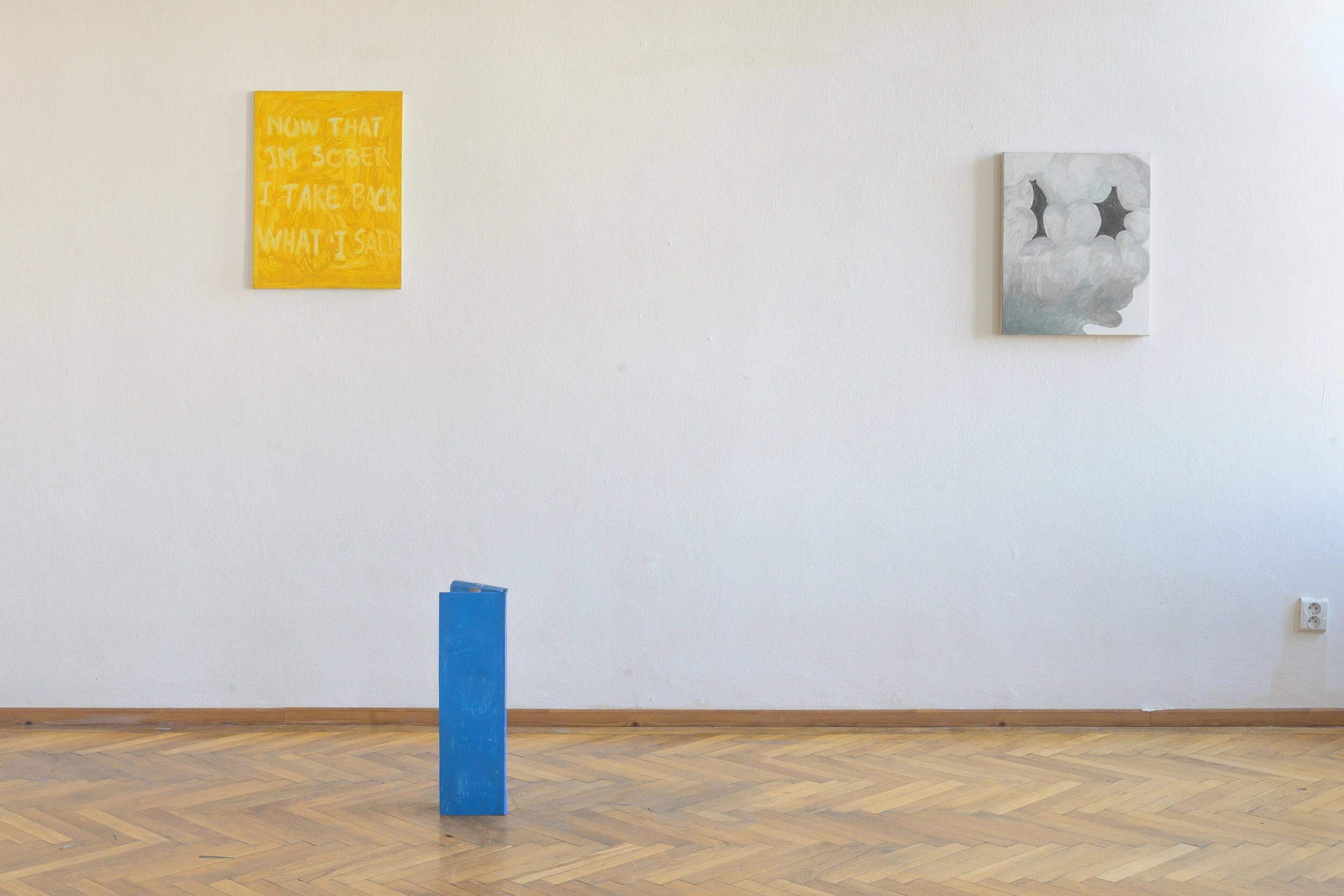CANNY FAMILY / In Quarantine + text by Nikolas Bernath
Eladio Aguilera, Christian Bär, Andrea Martinucci, Alex Selmeci
Curated by Nikolas Bernath
April 7 - ???, VUNU Gallery Košice, Slovakia
On the first of April, we were about to open the second exhibition at VUNU Gallery this year and hence continue our international program of 2020. We invited four artists from Italy, Spain, Germany and Slovakia to join us.
In the meantime, however, we have all been affected by a new planetary situation on Earth, but only a few of us wanted to admit it. We were looking forward to meeting our guests, to install the exhibition and to celebrate the next opening
on our terrace. The situation has changed rapidly, borders have been closed
and flights have been cancelled, though art has already been travelling all around Europe for days, heading towards us. On the planned opening day, the last package arrived. We unpacked everything and now the gallery is full of art. It seems to us that the best thing we can do is to install the exhibition and open the gallery - online.
"The gallery is no longer the primary exhibition space; the Internet is", writes Loney Abrams in her essay titled Flatland. In many ways, in the context of contemporary art galleries and the distribution of contemporary art, we agree. However, those who know our project also know that it is strongly based on physical contact with the viewer. Many of you come to us regularly for every opening or other events. We highly appreciate it and therefore we are very much concerned about the current situation. Of course, there are currently important challenges ahead, especially in relation to health protection. Yet, we believe that there is still much room for culture and art. That is why we will continue with the VUNU project in a digital space if the situation allows us to so.
Eladio Aguilera
Displayed artworks belong to the project “Why is it so hard to accept the party is over?”, where their sentences are understood as political elements and consumer spaces and are found in satirical, humorous, banal and everyday aspects of daily life. Within the artist’s interests, the formal commitment goes through the need to create spaces and devices within the painting. In this sense, the artist tries to combine the traditional pictorial depiction with an architectural and object approach.
Christian Bär
The impact of uniformity and homogeneity of images in social media builds the centre of Christian Bär's work. Posts and Reposts are the Base of his paintings. The repetition and mimicry of types of images are contradicting the novelty and individualism which the protagonists of social-media platforms aim for. On the artist's Smartphone or Tablet, he transfers these posts, graphics and tweets into cut-out-like, monochrome, digital drawings. The casual moment of digital drawing, the choreography of his fingers, the abstraction while capturing these images in drawings as well as the material uniformity, it all fascinates him. The transformation into a uniform digital drawing is similar to the transformation the images in social media go through due to their endless repetition. Christian Bär is not trying to criticize the flood of digital imagery, rather more accepting it and trying to grasp out new possibilities for painting.
Andrea Martinucci
This work says what the artist feels in a precise moment about his condition as an artist and his condition as a man. Working on the concept of impossibility, failure and fragility, he inserts a text that puts the reader in front of a choice: Adapt or Die. The sentence is dematerialized in four pages, loses its meaning. This approach is linked to Andrea Martinucci's works: what remains is a single point suspended in a totally purple page. Society requires us to adapt to certain canons. The error is not considered at all. If you are not in line with the common thought, you are automatically excluded from the game. The society becomes close to mass zombification. Zombies are used as a sociological metaphor. Through the myth of the living-dead, the victims are transformed into monsters, therefore it's possible and legitimate to eliminate them. The living-dead adapts to live in contemporary society.
Andrea Martinucci was not able to send us the artworks he originally prepared for the show. He found a crisis solution and sent us digital files of the work titled Adapt or Die. This piece takes a special context in these days full of fear, uncertainty and doubt. On the other hand exposure of the artwork can be understood also as a gesture of resistance.
Alex Selmeci
The basis of this series of paintings was a story about a fictional creature called the Indeterminate, which possesses various special abilities. The individual images depict how they can merge not only with the environment but also with the mind, how they can grasp substances of the gaseous or liquid state, but also foreign memories or subconscious processes. The Indeterminate can enter into any other being and feel completely everything in it, that is, it travels through different individual realities, but at the same time, its own identity has no clear definition. Through these and other abilities, it reaches beyond perfection and points out the absurdity of the pursuit. In the paintings, it takes a scheme of spirit that represents the variable nature of its form. All abilities are shown fragmentary and fairly vague, in a simplified or symbolic plane, and thus the main story becomes unreadable.
We are very sorry that we can’t be with the artists and all of you at the opening in our gallery. Listen to the special CANNY FAMILY playlist we made for your home listening.
Documentation of the exhibition by Tibor Czitó
















